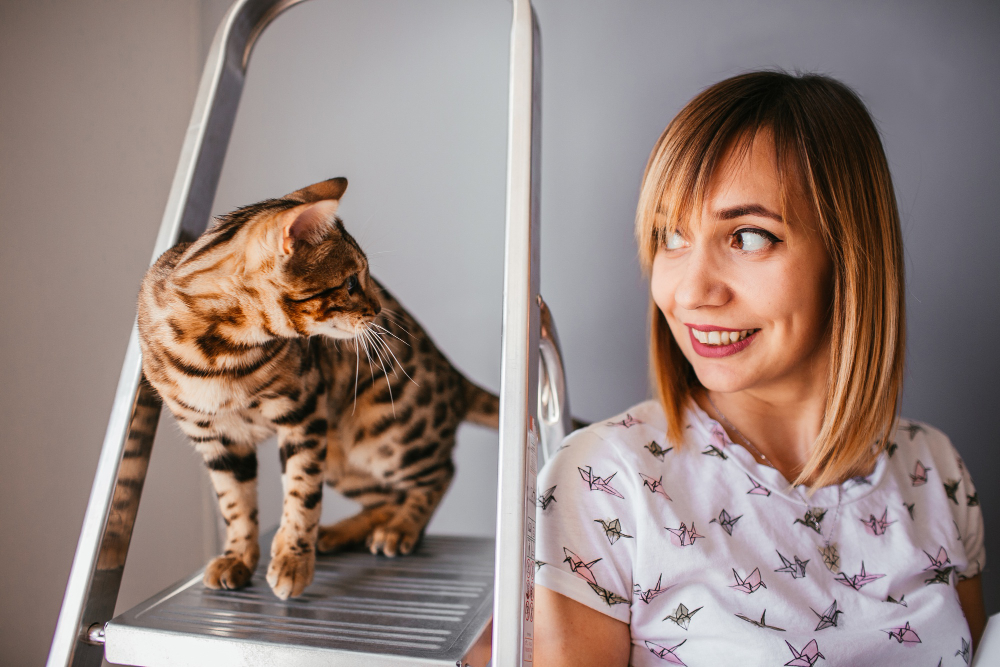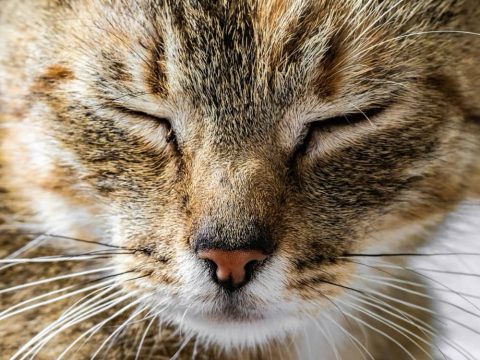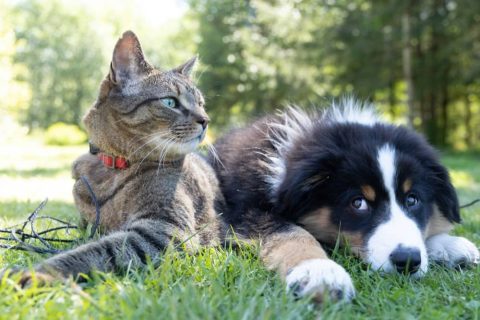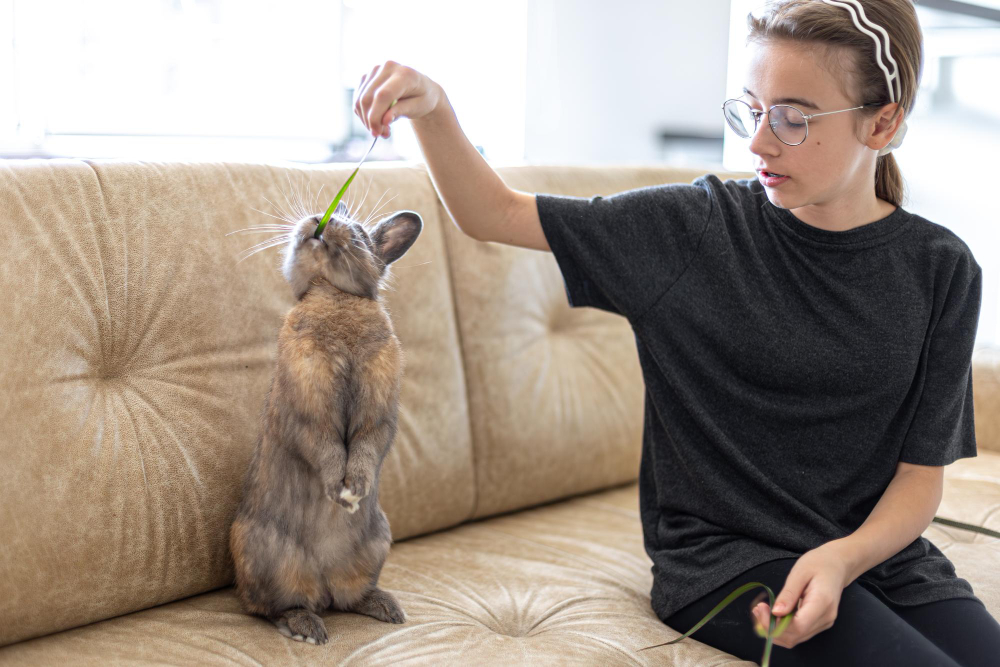Cats are curious by nature—leaves blowing past a window, a bird chirping outside, or even the soft crinkle of a snack wrapper can pull your feline’s attention in a heartbeat. But when it comes to training, this curiosity often becomes the biggest hurdle. If your cat seems to forget everything you’ve taught the moment something moves, you’re not alone. The good news? With the right approach, you can train your cat to stay focused, even when distractions abound.
Contents
Understanding Why Your Cat Gets Distracted
Before jumping into strategies, it helps to understand what’s really going on. When your cat ignores a command or wanders off mid-training, it’s not because she’s stubborn or disobedient. In reality:
- She may not have a strong history of reinforcement.
- The training might not have been consistent.
- The environment offers more compelling stimuli than your reward.
In other words, your cat is making a logical choice—just not the one you want.
Using the Premack Principle With Cats
The Premack Principle states that a more likely behavior can reinforce a less likely one. For cats, this could mean using their desire to jump on windowsills or chase toys to reinforce less interesting behaviors like coming when called or sitting on cue.
For example, if your cat enjoys bird-watching, you can let her do so after responding to a cue. Over time, this builds a strong connection between the desired behavior and the reward.
Training Tips for Feline Focus
Add Distance From the Distraction
If your cat can’t keep her eyes off the parakeet in the next room, you’re too close to the action. Start by creating space between your cat and the distraction. This makes it easier for her to focus on you.
Gradually reduce the distance over time, always working at a level where your cat can succeed. This technique, known as desensitization, helps build her tolerance and control.
Introduce Distractions Slowly
Just because your cat can respond to commands in your quiet living room doesn’t mean she’s ready for prime time. Begin by training in low-distraction environments and slowly add more stimuli—like soft music, a squeaky toy in the background, or even another person walking by.
Keep a distraction ladder—a ranked list of stimuli from least to most distracting—and move up the rungs gradually.
Lower Other Training Criteria Temporarily
When adding distractions, reduce the difficulty of other training aspects. For example, if your cat previously held a sit for 10 seconds, reduce that to 3 seconds in a new environment. Then build back up as she adapts.
Increase the Rate of Reinforcement
Reward your cat more frequently when distractions are present. In a quiet room, you might reward her every few seconds. But in a busier environment, reinforce more often—every second or two—to maintain engagement.
This keeps her focused on you and makes your reward more competitive with her surroundings.
Use High-Value Reinforcers
A piece of kibble may work at home, but when competing with a fluttering curtain or another pet, bring out the good stuff. Think tuna, chicken, or squeeze treats. Know your cat’s “awesome list”—the things she truly loves—and use those to your advantage.
Better yet, let the distraction become the reward. Let her watch the squirrel after she responds to a cue. Play can also be a powerful reinforcer—many cats will eagerly chase a wand toy or ball past minor distractions.
Cue a Familiar Behavior
If your cat freezes or gets overwhelmed, fall back on something she knows well. Cue a simple behavior like targeting your hand or sitting. These familiar actions can ground her and make it easier to regain focus.
Play Through Distractions
Sometimes, play is more effective than food. Engage your cat with a favorite toy when distractions arise. A short game can reset her attention and allow you to return to training with a more focused feline.
Practice Often and in Different Settings
Cats, like people, learn best through repetition. Vary your training locations—different rooms, times of day, and even slightly busier environments. The more experiences your cat has practicing behaviors under different conditions, the stronger her response will be.
Measure Progress With the Push-Drop-Stick Method
Adapted for feline learners, this technique helps adjust criteria in real time:
- Pick your goal—say, your cat targets your hand five feet from a noisy hallway.
- Prepare five treats.
- Cue the behavior five times.
- Reward success; keep count of failures.
- If she fails once or not at all, push the criteria—maybe get closer to the hallway.
- If she fails three or more times, drop the criteria—move farther away.
- If she fails twice, stick at the current level.
This method ensures you’re always training at your cat’s current capability, not above it.

Creating a Distraction-Friendly Training Environment
Even if you’re not running a feline training school, setting the right environment makes all the difference:
- Safety first: Ensure the space is secure, with no escape routes or harmful objects.
- Comfort matters: Use cozy mats, familiar smells, and soft lighting.
- Minimize chaos: Start with quiet zones and gradually increase stimulation.
- Designate zones: Have a training area, a play area, and a rest area if possible.
Reinforcing Calmness as a Default Behavior
One overlooked but powerful technique is reinforcing calmness as a baseline state. Cats that are used to chilling out tend to handle distractions more gracefully. Use treats, gentle petting, or soft verbal praise when your cat is simply relaxing near a known distraction. Over time, this builds an emotional association that says, “Good things happen when I stay calm.”
This is especially useful in households with lots of movement, like homes with children, other pets, or regular visitors. Calm reinforcement can work like a background tune that your cat gradually syncs to, even when the volume of the environment goes up.
Integrating Keywords Naturally for Broader Reach
As pet owners increasingly search for personalized solutions, integrating terms like “pet wellness exams,” “happy tails pet resort,” or “custom pet hoodie” can help connect with a wider community of cat lovers looking to enrich their feline’s life. Many owners also live in “pet friendly apartments” or travel frequently, so training a cat to focus amid distractions becomes not just useful—it’s essential for stress-free cohabitation.
For those considering pet insurance to cover training-related health incidents or general wellness, options like “pet insurance Colorado” or “ASPCA pet insurance discounts” can offer peace of mind.
Remember, a well-trained cat is not just obedient—it’s confident, calm, and equipped to handle whatever comes its way.
Final Thoughts: Celebrate Small Wins
Training a cat to stay focused in a world full of temptations takes time, consistency, and creativity. But every step—every second of eye contact, every successful sit near a fluttering curtain—is a win.
So grab your treats, cue the laser pointer, and turn distractions into your secret training weapon. Your cat’s focus is just a few smart steps away.









